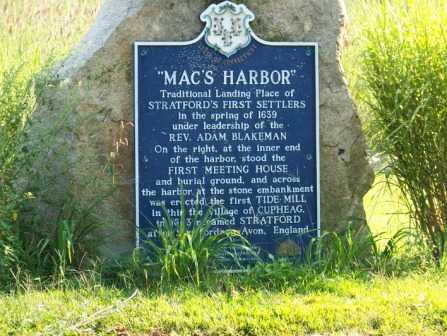| |
Our History
Written by Barbara M. Sirois in 1988
Located on the Eastern edge of Fairfield County, Stratford is a coastal New England community of 51,000 residents, comprising 18.7 square miles, enjoying a varied climate of vibrant changing seasons with summer temperatures averaging
82 degrees F. and winter averages of 41 degrees F. The town stretches for some 8 miles along the Housatonic River, and for at least 200 years, this waterway was a main highway for trade and transportation.
The community's colonial history is traced to the year 1639, when a courageous group of settlers arrived at Mac's Harbor on the banks of the Housatonic River. This was the Indian Village of Cupheag. According to town records, Cupheag was first called Stratford in April of 1643. Though there is little historical data to allow us to determine the exact origin of the name, it is traditionally assumed that one Thomas Alsop was among the first group of settlers who came to America in 1639. John Alsop, Thomas' father, and William Shakespeare were supposedly both from the same parish of the Town of Stratford-upon-Avon in England, and both were taxed by the Crown according to his individual worth. From the foregoing, it may reasonably be deduced that our Stratford was so named after the great playwright's own town of Stratford-upon-Avon.
Stratford takes great pride in its heritage - from its first settlers to the brave immigrants who followed in later years - from its sparkling seashore to its rolling countryside - it is steeped in history and rich in natural beauty. It is one of the
few communities in the entire nation to own its own forest, and it proudly keeps watch over the magnificent "Great Meadows" - the last great salt marsh left in New England. A special town of unique diversity transcended into a homogeneous
melding, Stratford is quintessential New England.
We invite you to stay awhile-imagine and dream with us.
Perhaps if we can learn from the past,
it will help to better understand the present,
and illuminate for us the future.

|
ADDITIONAL LINKS
|
|